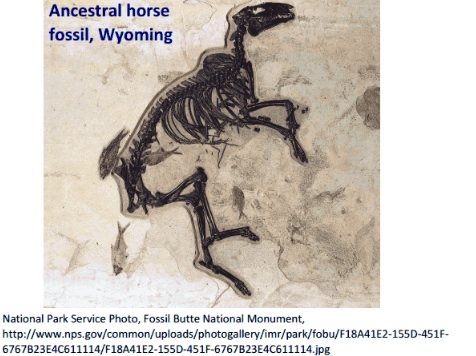PETM

Video: Paleoclimate Concepts (1:31)
PRESENTER: This was taken from work by a variety of people, and especially by Jim Zachos. And it was used in a report of the US government, the CCSP, that I helped with a little bit. And so we'll draw you a dinosaur over here.
Poor dinosaur, because right here, 65 million years ago, this big meteorite came zinging in, and the poor dinosaur was wiped out. And what we have is time since then, from 65 million years ago on your left, running up to today on your right.
And this is sort of no ice on the planet down here right after the dinosaurs. And then you start to get ice in East Antarctica and then West Antarctica. So over here, it is icy.
And what you can see down here are estimates of temperature. In the no-ice world, it was pretty hot. And then it cooled off, as we went to ice. And this was primarily because of dropping CO2.
And right here, there's this little blip. It was already hot. And then in a reasonably short time of sort of 10,000 years, the temperature went way up. And then over 100,000 or 200,000 years, the temperature came back down.
And that had all sorts of implications for living things. It changed the rain. It changed who lived where.
It drove evolution. It drove a whole bunch of things. And it was caused rather clearly by CO2 being belched out of the Earth's system in various places.
During the Cenozoic, about 55 million years ago, an extinction event wiped out many sea-floor foraminifera, small shelly critters, at the time dividing the Paleocene and Eocene Epochs. Starting with an already-warm world, the temperature went up several degrees in roughly 10,000-20,000 years (with some uncertainty) as CO2 rose and then cooled over the next 100,000-200,000 years as CO2 fell. The Arctic was ice-free during the event. Plants and animals migrated rapidly. Many large animals became “dwarfed” during peak warmth, possibly because high temperatures cause greater trouble for larger animals. (We generate heat over the volume of our bodies and lose heat from the surface, and the ratio of surface area to volume is generally smaller in larger animals, making heat loss harder.) Insect damage to leaves spiked and patterns of rainfall and drought shifted. The ocean became more acidic, and that extra acidity was then neutralized in part by dissolving shells.

The source of the CO2 remains somewhat uncertain but most likely was volcanic eruptions linked to rifting of the North Atlantic cooking organic material including oil in rocks, amplified by the loss of carbon from soils and sea-floor methane clathrates. The event is unique over tens of millions of years in its size and speed, so may have involved a coincidence of some sort, or else more such events would have occurred.
Wherever the CO2 came from in detail, it warmed the climate as much or more than models generally calculate and had very large impacts on living things. And, the effects lasted a long time. For example, although corals did not go extinct, coral reefs disappeared as functioning ecosystems and did not come back for millions of year.
